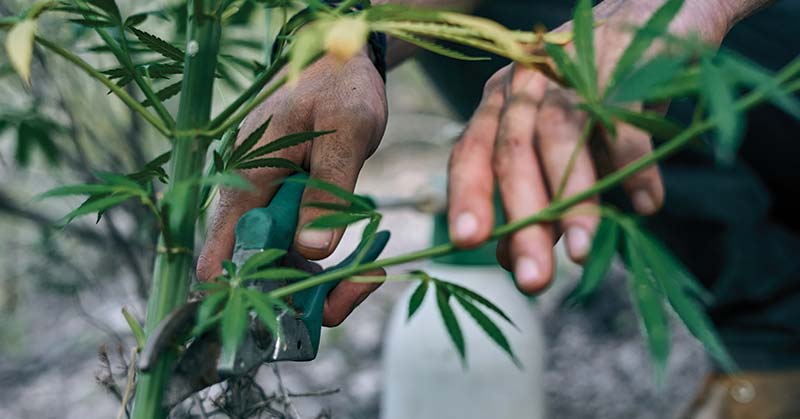Bamboo, known for its fast growth and environmental friendliness, is a popular choice for gardeners and eco-conscious enthusiasts. Growing bamboo from seeds, while challenging, can be a rewarding experience.
In this blog post, we’ll explore the step-by-step process of growing bamboo from seeds.
Selecting the Right Bamboo Seeds
Before you begin, it’s important to choose the right type of bamboo seeds. There are over 1,000 species of bamboo, and each has its unique characteristics and growing requirements.
Consider the climate, soil type, and the purpose of planting (decorative, privacy screen, etc.) while selecting your seeds. Popular varieties include Phyllostachys, Bambusa, and Fargesia.
Preparing the Seeds
Bamboo seeds have a hard outer shell that can impede germination. To overcome this, soak the seeds in water for 24 to 48 hours. This process, known as scarification, helps to soften the shell and promotes germination.
Choosing the Right Soil and Container
Bamboo thrives in well-draining, fertile soil. A mix of potting soil, compost, and perlite or sand is ideal. Choose a container that’s large enough to accommodate the bamboo’s root growth, with adequate drainage holes to prevent waterlogging.
Sowing the Seeds
After preparing the soil, sow the bamboo seeds. Spread the seeds evenly over the soil surface and cover them lightly with a thin layer of soil. The depth should be no more than twice the size of the seed.
Providing Adequate Water and Temperature
Bamboo seeds need consistent moisture to germinate. Water the soil lightly but regularly, keeping it consistently moist but not waterlogged.
The ideal germination temperature is between 68°F to 77°F (20°C to 25°C). You can use a heat mat to maintain a steady temperature if necessary.
Ensuring Proper Light
While germinating, bamboo seeds don’t require direct sunlight. A bright, indirect light source is sufficient. Once the seeds sprout, gradually introduce them to more sunlight.
Transplanting the Seedlings
When the seedlings are a few inches tall and have a couple of true leaves, they are ready to be transplanted. Carefully transplant them into larger pots or directly into the ground if the climate is suitable.
Ensure the planting area has good sun exposure and is protected from strong winds.
Caring for Your Bamboo
As your bamboo grows, it will require regular care. This includes watering, fertilizing, and pruning. Bamboo prefers consistent moisture, so water regularly, especially in dry conditions.
Fertilize with a balanced, slow-release fertilizer during the growing season. Prune dead or weak canes to encourage new growth.
Managing Bamboo Growth
Bamboo can be invasive, so it’s important to manage its growth. For running bamboo species, consider installing a root barrier to prevent it from spreading uncontrollably. Clumping bamboo varieties are less invasive and easier to manage.
Enjoying Your Bamboo
With patience and proper care, your bamboo will thrive, providing a beautiful and sustainable addition to your garden. Bamboo can be used for landscaping, creating privacy screens, or even for its wood and shoots.
Conclusion
Growing bamboo from seeds can be a challenging yet rewarding process. It requires patience, attention to detail, and consistent care. By following these steps, you can successfully cultivate bamboo and enjoy its many benefits. Happy gardening!
Remember, the key to successful bamboo cultivation lies in understanding the specific needs of the species you choose to grow. Don’t hesitate to consult local gardening centers or online forums for additional tips and advice specific to your region and bamboo variety.
FAQs on How to Grow Bamboo Seeds
Q: What is the best time of year to plant bamboo seeds?
A: The best time to plant bamboo seeds is typically in the spring, as this allows for a full growing season. However, in warmer climates, planting can also be successful in early fall.
Q: How long does it take for bamboo seeds to germinate?
A: Bamboo seeds can take anywhere from a few days to a few weeks to germinate, depending on the species and environmental conditions. On average, expect germination within 10 to 20 days.
Q: Do bamboo seeds need sunlight to germinate?
A: During germination, bamboo seeds do not require direct sunlight. They should be placed in a spot with bright, indirect light. After germination, gradually introduce the seedlings to more sunlight.
Q: How often should I water bamboo seeds?
A: Water the bamboo seeds lightly but regularly to maintain consistent moisture. The soil should be moist but not waterlogged to prevent rot.
Q: What type of soil is best for growing bamboo from seeds?
A: Bamboo seeds thrive in well-draining, fertile soil. A mix of potting soil, compost, and perlite or sand is ideal for ensuring good drainage and nutrient availability.
Q: How deep should I plant bamboo seeds?
A: Bamboo seeds should be sown at a shallow depth, no more than twice the size of the seed. A thin layer of soil covering the seeds is sufficient.
Q: When should I transplant bamboo seedlings?
A: Transplant bamboo seedlings when they are a few inches tall and have a couple of true leaves. This usually occurs a few weeks after germination.
Q: How do I prevent bamboo from becoming invasive?
A: To prevent bamboo from becoming invasive, especially for running bamboo species, consider installing a root barrier. Clumping bamboo varieties are generally less invasive.
Q: What type of fertilizer is best for bamboo?
A: Use a balanced, slow-release fertilizer for bamboo. Fertilize during the growing season, following the manufacturer’s instructions for application rates and frequency.
Q: Can I grow bamboo indoors from seeds?
A: Yes, bamboo can be grown indoors from seeds. Ensure the plant receives adequate light, proper watering, and is potted in well-draining soil. However, some bamboo species can grow quite large, so consider the available space and the mature size of the bamboo.




